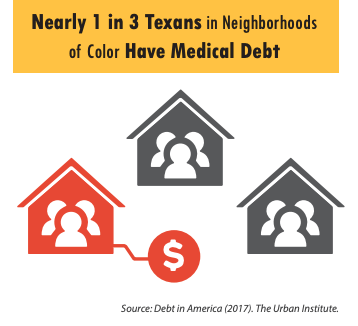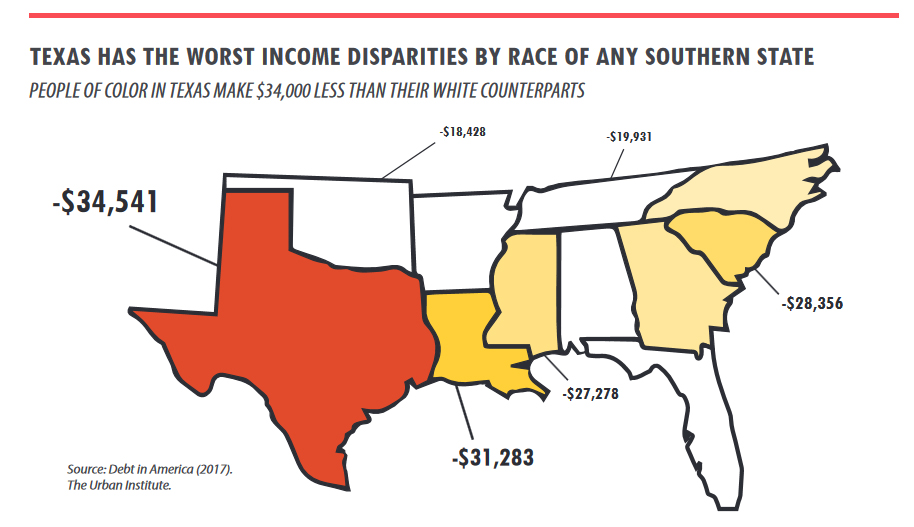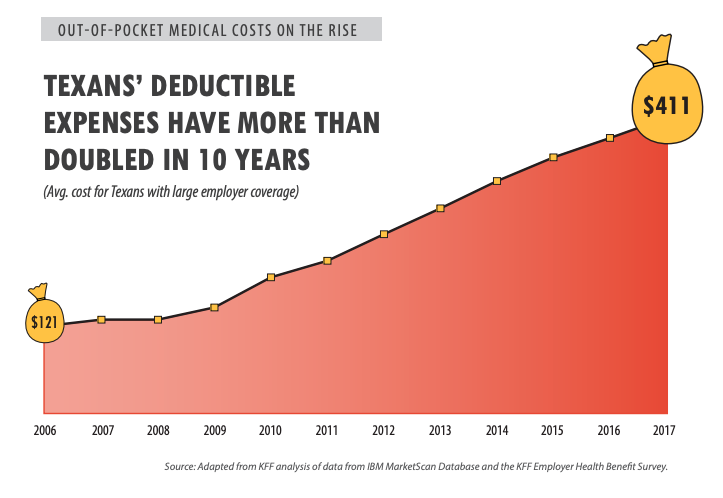
Share On Social!
Texas Latinos and other communities of color are among the hardest hit by medical debt, according to a new report.
The report, from the Center for Public Policy Priorities, shows that 1 in 4 Texans (23%) has medical debt. In communities of color, that rises to nearly 1 in 3 Texans (29%). These rates are higher than in other states and the nation.
“When people can’t pay their medical bills, costs turn into mounting medical debt,” according to the report. “[This medical debt] compromises patients’ health and financial security, harms their credit scores, and can even limit a patient’s housing, job, and health opportunities.”
Alarming Medical Debt among Texans of Color
The median medical debt in collections owed in Texas is $850.
Texans of color owe slightly more at $875. That’s 22% more than the national average owed by Americans of color at $720.
 In all, 29% of Texans in neighborhoods of color have medical debt that has been sent to collections agencies. This rate is six percentage points higher than the percent of Texans with medical debt in White neighborhoods, according to CPPP report.
In all, 29% of Texans in neighborhoods of color have medical debt that has been sent to collections agencies. This rate is six percentage points higher than the percent of Texans with medical debt in White neighborhoods, according to CPPP report.
It gets worse when you compare Texas to other southern states.
Texans in neighborhoods of color have medical debt at rates higher than six other Southern states—Alabama, Arkansas, Florida, Georgia, Mississippi, and Tennessee—and far greater than the national average of 21 percent.
“These vast racial disparities in Texas medical debt worsen the racial inequality we know to exist in housing access, educational attainment, and other social and economic opportunities,” according to CPPP report.
Why Such Medical Debt? Income Inequity
The report cites several reasons for Texans’ medical debt. Income inequity is a major factor.
Poverty and income inequity are nothing new in Texas.
 For example, in San Antonio, Texas (64% Latino), the gap between the wealthiest zip code in the city and the poorest is among the widest in the nation compared to other major metropolitan areas.
For example, in San Antonio, Texas (64% Latino), the gap between the wealthiest zip code in the city and the poorest is among the widest in the nation compared to other major metropolitan areas.
CPPP’s report highlights income inequities between White households and those of color in Texas.
“White households in Texas earn an average of $34,541 more per year than Texans of color,” the report states. “This is the worse income disparity in the country.”
Why Such Medical Debt? Lack of Health Insurance
Health insurance and rising medical costs are also connected to medical debt, according to the CPPP report.
Texas has the highest uninsured rate across the nation at 17.3%. Additionally, the rate of uninsured childbearing-age women here is more than double the national average.
This is even worse for Latino kids in the state.
 More than 1 in 5 uninsured kids in the U.S. live in Texas, which is 835,000 as of 2017. From 2016 to 2017, Texas saw an increase of 83,000 uninsured kids.
More than 1 in 5 uninsured kids in the U.S. live in Texas, which is 835,000 as of 2017. From 2016 to 2017, Texas saw an increase of 83,000 uninsured kids.
“Without adequate health insurance they have to bear more of the cost of healthcare, and healthcare is really expensive,” Arthur Mora, an associate professor and chair of the Health Behavior and Health Systems Department at the University of North Texas Health Science Center’s School of Public Health, told The Fort Worth Star-Telegram.
“They fall in what we call, the coverage gap, where they don’t qualify for Medicaid. But they’re also not receiving healthcare, nor are they receiving any sort of subsidies to purchase healthcare, and so it becomes a much more burdensome problem for them.”
This causes many health issues which often go undiagnosed or untreated.
“Over half of all uninsured Hispanics in the United States live in Texas, which makes achieving racial equity in healthcare coverage and access all the more important if we aspire to be a prosperous state where people of all backgrounds reach their full potential,” the report states.
How Texas Can Address Medical Debt Inequities
The CPPP report offers these real solutions:
1. Expand federal healthcare coverage to alleviate the gap that traps low-income Texans.
2. Implement strong medical assistance policy guidelines that eliminate or cap exposure to medical debt for poor and low-income patients.
3. End litigation and legislative attacks on health coverage , and focus efforts on developing real policy solutions.
Other solutions that can help include:
• Community based health clinics
• Paid family leave
Check out what else is happening to boost health care access for Latinos!
Editor’s Note:The main is from Getty Images/Hero Images via NPR.
By The Numbers
23.7
percent
of Latino children are living in poverty



